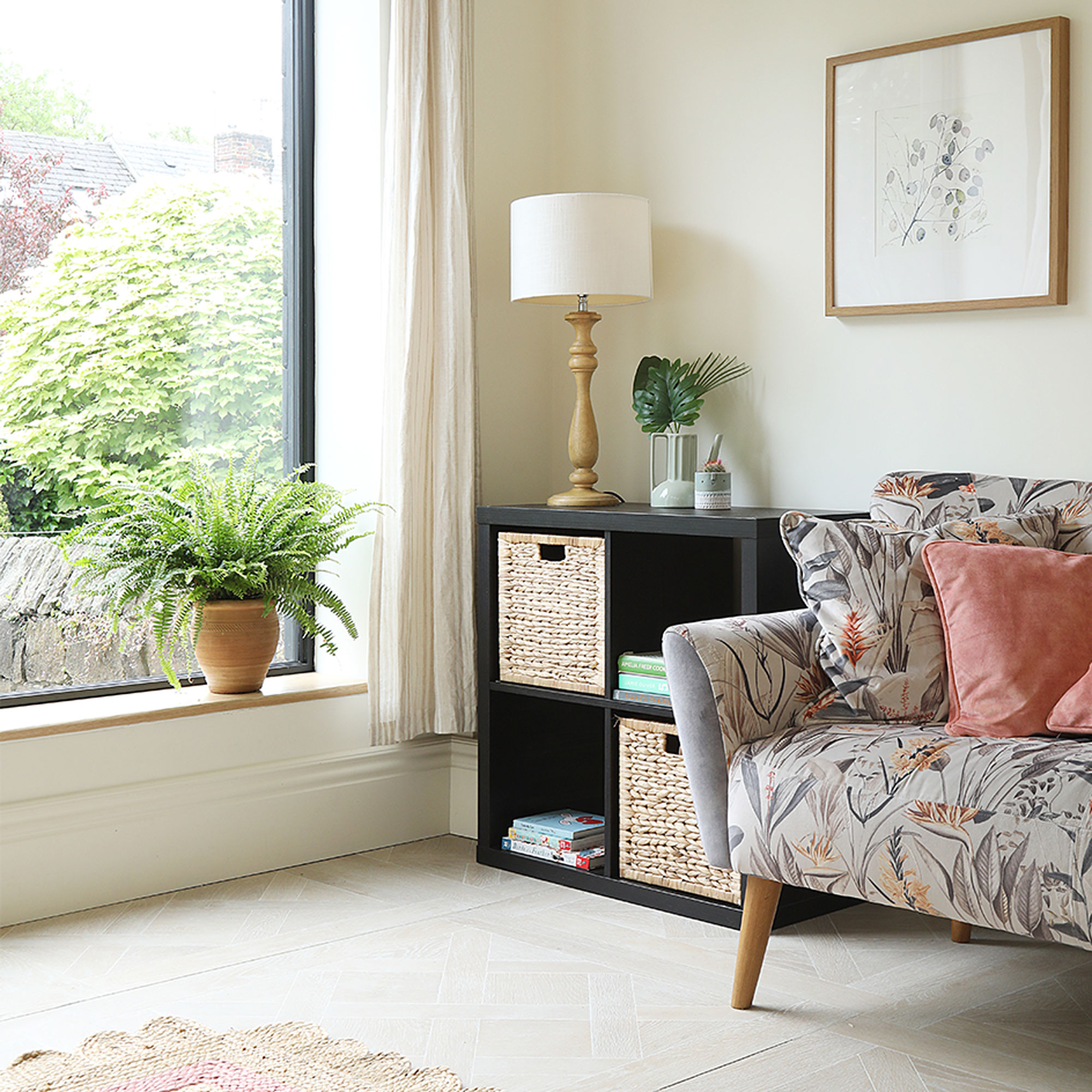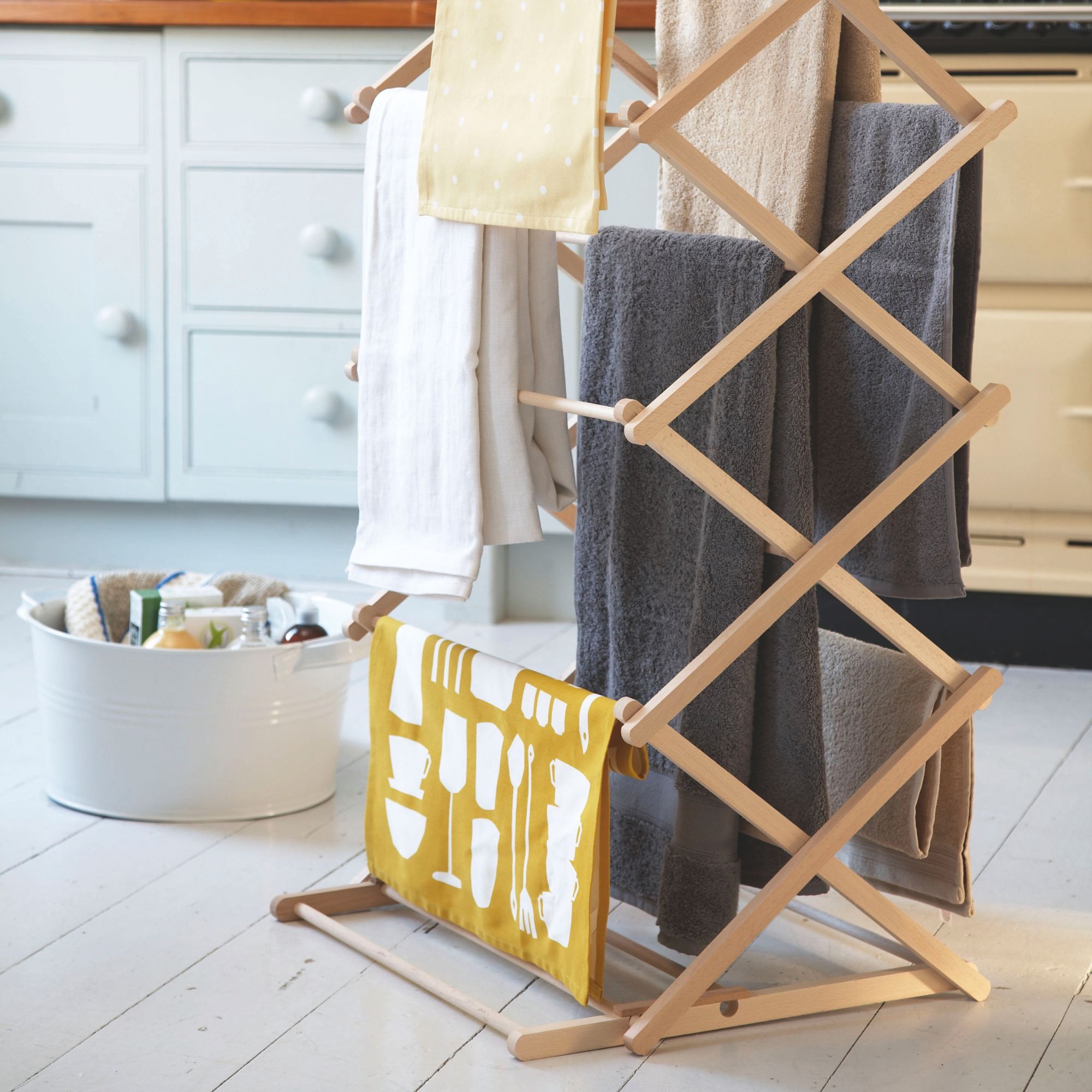How to stop condensation forming on windows overnight - 5 experts approved method to banish wet windows for good
Because you don't want to be greeted by wet windows first thing in the morning


Colder weather has arrived and you may already be dealing with one of its calling cards - condensation. Waking in the morning, there’s nothing worse than opening the curtains to misted-up windows. This why knowing how to stop condensation forming on windows overnight is important knowledge to have over winter.
The main reason condensation forms on windows overnight is due to the drop in temperature when the sun sets. Breathing out at night means that stopping condensation on bedroom windows is one of the biggest problems most houses face. Left unchecked condensation on windows can damage window frames and even lead to mould forming around the window.
Here’s everything you need to do to prevent condensation from forming on your windows overnight, according to the experts.
Why does condensation form on windows overnight?

‘Condensation is caused when warm, moist air inside the house comes into contact with the cold surface of the windows. During the night, temperature levels drop making windows colder, and therefore increasing the chance that condensation is going to form,’ explains Nicholas Auckland, heating and energy expert at Trade Radiators.
Bedroom windows are typically the worst affected area as they become quite humid as we sleep. However, kitchens and bathrooms can also be affected, they are areas where moisture builds up from cooking dinner or having a shower.
1. Use a standing fan

One of the best ways to stop condensation from forming is by maintaining a consistent airflow through your home. The simplest way to do this is by opening your windows. However, during winter you may not want to keep your windows open which is where a standing fan comes into play.
‘If you would rather not open your windows in winter or your home lacks an exhaust fan, a standing fan can help circulate air from other areas of your home. Window fans are another great option to limit any buildup of moisture, especially if they're reversible, allowing you to adjust airflow during winter to further prevent condensation,’ advises Michael Wray, Insulation Expert and owner of National Insulation Supplies.

A standing fan will improve the flow of air in a room, without you having to open windows in winter. This prevents a build-up of moisture.
2. Check for draughts

‘Draughts around windows and doors trap moisture increasing humidity levels, so sealing them is beneficial,’ says Nicholas.
If your window seals are not sufficient, they could also be allowing humid air to seep into the room.
‘Draft-proofing windows and doors with weather-stripping, draft excluders and silicone caulk can help maintain a steady indoor climate and block moisture-laden air from entering, reducing the risk of condensation forming. Additionally, choose weather-stripping that complements your window design for both function and aesthetics,’ says Michael.
Weatherstripping is a material used to seal gaps around doors and windows. It's typically self-adhesive and made from rubber or silicone. Simply line your window with the stripping to prevent cold air slipping in.
3. Invest in double glazing

Another thing you should check is that your windows are at least double glazed, as single glazed windows often have a greater temperature difference compared to the heat of the room, which causes condensation.
‘The quality of your window can also help. A window's performance in retaining heat is ranked on U-Values, a measurement of heat loss and the rate at which heat is lost. Single-glazed windows will inevitably cause condensation as they have a high U-Value (usually around 5-6 w/m2K), and are the thinnest part of a wall and have a far lower surface temperature than the rest of the home,’ says o Trotman, Marketing Manager at The Residence Collection.
‘Double glazing and triple glazing are the better options to help reduce the risk of damp as they have an extra layer of protection against the outside and have much lower U-Values too, although triple-glazed are the best option.’
4. Be careful when drying clothes

‘Drying clothes indoors can unknowingly be adding to the condensation problem by releasing more moisture into the home,’ says Stephen Hankinson, a heating expert at Electric Radiators Direct.
‘Make sure to dry your clothes in well-ventilated rooms and avoid doing it in small rooms if you can. Open a window or use an extractor fan when possible to reduce the moisture build-up from your wet clothes.
Investing in a dehumidifier and heated clothes airer is one of the best ways to dry clothes quickly inside if you are short on drying space and unable to leave a window open. But always remember wet laundry can increase the humidity in your home so it’s important to keep your drying area to one room and keep it well ventilated.

Heated airers are a winter must-have and can dry your clothes in a matter of hours - thus reducing the amount of moisture in your home. The JML DriBUDDI Heated Indoor Airer was our top-rated airer because it was so speedy at drying clothes.
5. Invest in a dehumidifier

Investing in one of the best dehumidifiers is a game-changer when it comes to reducing humidity in your home.
‘Dehumidifiers take the excess moisture out of the air, preventing it from building up on windows and help maintain optimal humidity levels in the home,’ says Stephen.
‘Once purchased, they are a cost-efficient way to keep on top of condensation, only costing around 14p to run for an hour.
‘If opening the windows during cold winter months doesn’t appeal to you, purchasing a dehumidifier is a good alternative option when tackling condensation.’

The ElectriQ 12L Dehumidifier is a great budget buy. It's quiet and portable, and its colour-changing indicator light is a brilliant feature for viewing your home's humidity levels at a glance.
By taking these measures, you can say goodbye to being greeted by condensation on your windows every morning.
Get the Ideal Home Newsletter
Sign up to our newsletter for style and decor inspiration, house makeovers, project advice and more.

Kezia Reynolds joined the Ideal Home team as News Writer in September 2024. After graduating from City, University of London in 2022 with a bachelor’s degree in journalism, Kezia kicked off her career spending two years working on women’s weekly magazines. She is always on the lookout for the latest home news, finding you the best deals and trends - so you don’t miss a thing!
-
 Wood drenching is the calming new twist on the colour drenching trend – here’s how to make the look work in your home
Wood drenching is the calming new twist on the colour drenching trend – here’s how to make the look work in your homeIt’s easier than ever to embrace natural materials
By Maddie Balcombe
-
 Aldi is launching a £200 day bed with four different features - its sleek design is suited to the whole family
Aldi is launching a £200 day bed with four different features - its sleek design is suited to the whole familyYou don't want to miss out on this Specialbuy
By Kezia Reynolds
-
 How to set up a drip watering system that saves water and a lot of effort
How to set up a drip watering system that saves water and a lot of effortKeep your plants hydrated (and your water bill down) with this clever garden watering solution
By Natalie Osborn
-
 I've been waiting to try out the Ninja Slushi for months – this is what happened the first time I tried it
I've been waiting to try out the Ninja Slushi for months – this is what happened the first time I tried itThe Ninja Slushi is the stuff of dreams for summer entertaining
By Molly Cleary
-
 IKEA has drenched its BILLY bookcase in this year’s ‘it’ colour - but you’ll have to act fast if you want to get your hands on one
IKEA has drenched its BILLY bookcase in this year’s ‘it’ colour - but you’ll have to act fast if you want to get your hands on oneI'm obsessed with this gorgeous limited-edition colourway
By Kezia Reynolds
-
 My go-to Ninja coffee machine just had a major price drop. It's more affordable than I've seen it before
My go-to Ninja coffee machine just had a major price drop. It's more affordable than I've seen it beforeIt makes coffee shop quality achievable at home
By Molly Cleary
-
 I'm a kitchen decor editor and didn't like this tableware trend - until I saw H&M Home's designer-look plates
I'm a kitchen decor editor and didn't like this tableware trend - until I saw H&M Home's designer-look platesThey made it easy to justify a new crockery set
By Holly Cockburn
-
 Have we just had a sneak peek at Ninja's plans for pastel air fryers? These new US-exclusive Crispi colours are giving us hope for the same in the UK
Have we just had a sneak peek at Ninja's plans for pastel air fryers? These new US-exclusive Crispi colours are giving us hope for the same in the UKNinja's spring colours collection i the US has sparked some serious appliance envy
By Molly Cleary
-
 I'm suffering serious kitchen appliance envy over Ooni's new standmixer that sold out in 4 hours, but it's finally back in stock
I'm suffering serious kitchen appliance envy over Ooni's new standmixer that sold out in 4 hours, but it's finally back in stockHere's why the Ooni Halo Pro Spiral mixer is a big deal for at-home breadmakers
By Molly Cleary
-
 I’ve been looking for a new signature scent for my home and The White Company's new fragrance is the exact summer holiday smell I needed
I’ve been looking for a new signature scent for my home and The White Company's new fragrance is the exact summer holiday smell I neededSantorini smells fresh, summery and sophisticated
By Kezia Reynolds
-
 Should your doormat go inside or outside the front door? According to experts I've been getting it wrong for years
Should your doormat go inside or outside the front door? According to experts I've been getting it wrong for yearsExperts reveal the best spot for a a doormat based on your preferences and where you live
By Sara Hesikova